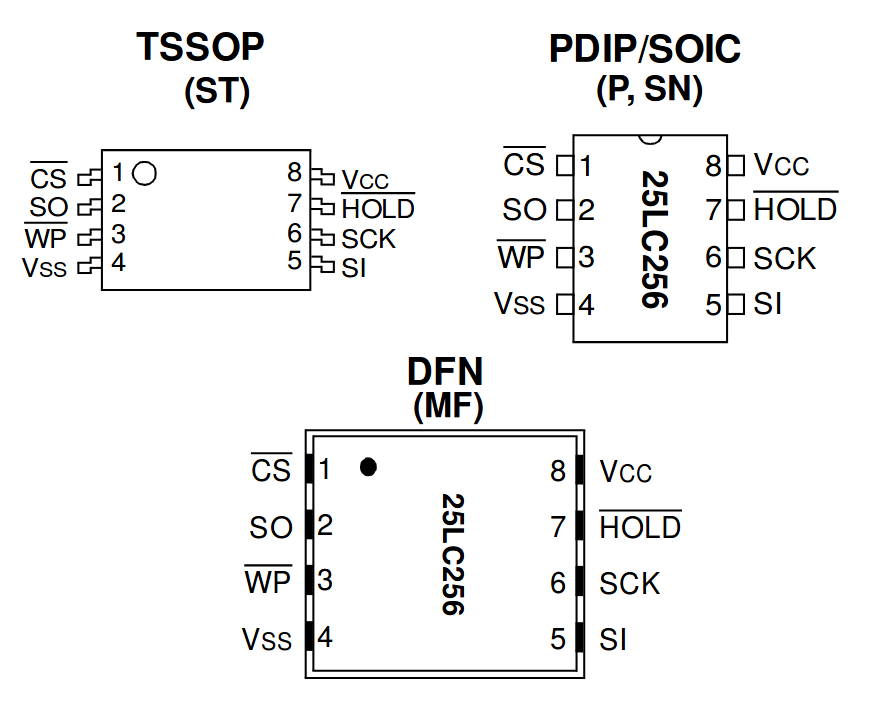Microchip's 25AA256 – When Internal Flash is Not Enough
Microchip’s 25AA256 and 25LC256 SPI eeproms provide a convinient "offline" storage facility for microcontrollers with SPI interfaces - up to 256 kbits can be stowed away safely.
Seeing Microchip introduce SPI flash memory might look funny at first glance – the Americans are, after all, known for various microcontrollers with extremely ingenious remanent memory features. Most of them, however, have two limits: the amount of memory tends to be limited, writes tend to lock up the CPU due to resource congestion.
Should you ever find yourself in such a rut, do not fret – both 25AA256 and 25LC256 are ready to be of aid. Deploying them could not be easier from a technical point of view – our figure shows the pinout; an application schematic is not needed due to the simplicity.

The pinout of the 25LC256 could not be easier
As with almost all other SPI peripherals, these SPI EEPROMs are quite flexible in terms of bus speeds. The datasheet claims that the bus can be run at up to 10MhZ, with erase and write operations usually taking around 5ms. Page size is said to be 64 bits, cells are expected to survive one million write operations.
In general, the bus implementation behaves just like any other SPI peripheral. However, the HOLD pin is interesting – it allows you to disable the memory controller, thereby repurposing the bus to control other hardware.
Given that these SPI flash memory ICs are intended to work with various microcontrollers, the components offer wide supply voltage ranges. The Microchip 25AA256 is able to work from 1.8V to 5.5V, while the Microchip 25LC256 has a lower limit of 2.5V. Nevertheless, both parts are ideally suited to work as Arduino flash memory – if you ever need to add additional storage space to your single board computer, this is the part to have on hand. The power consumption of about 5mA during operation is handleable for small microcontrollers – in standby, about one Microamp is consumed.